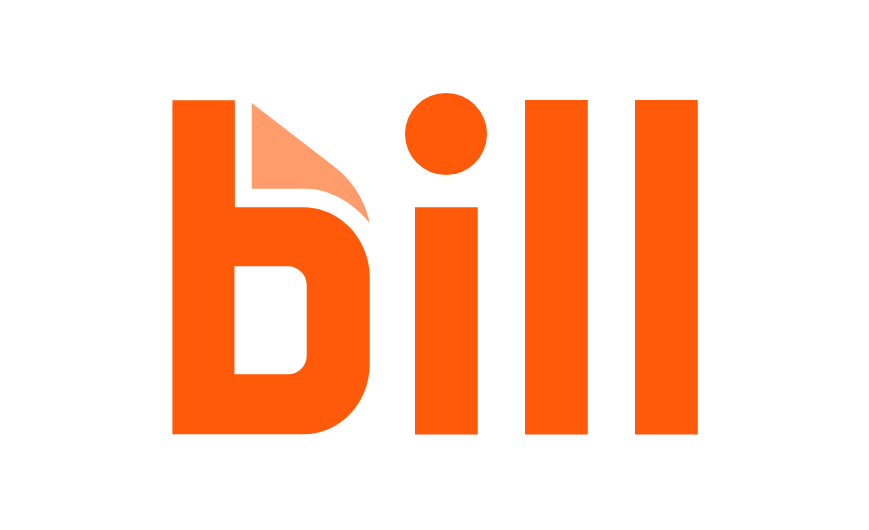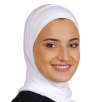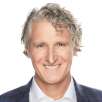More than 100 years ago, and before Edward Angle, dentists realized they could move teeth into a more esthetic position by applying various mechanical devices to the teeth. This, in turn, caused apposition and deposition of bone in areas where forces were increased or decreased. Teeth could be moved into a more esthetic position, and so the orthodontic profession was born.
Angle clearly stated his view that it was unethical to extract teeth for orthodontic purposes and proved that, with his complex fixed appliances, he was able to expand the arches and align the teeth. The problem at this stage was that a lot of these cases (possibly most of them) relapsed.
So Tweed, who was Angle’s student, suggested that the extraction of teeth was the only way to get stability. In the 1950s, extraction orthodontics became the normal practice after the Australian Orthodontist Percy Raymond Begg developed the first straight wire appliance, which required less wire bending skills than previous methods.
Today, orthodontists revere self-ligating brackets as the key to non-extraction orthodontics. Angle would be amused if he were around today. Has the stability of orthodontics changed? No. The orthodontic profession has accepted that to expect case stability using fixed appliances without fitting permanent retainers is both impractical and unrealistic.
embedImagecenter("Imagecenter_1_1056",1056, "large");
Progress in orthodontic stability is achieved by advances in flowable composite, rather than advances in orthodontic technique. The Australian Society of Orthodontists (ASO) website is an example of the widespread acceptance that stability is not possible with tooth-centred orthodontics.[1]
“Teeth may have a tendency to change their positions after treatment. The long term, faithful wearing of retainers should reduce this tendency.” (Source:www.aso.org.au/Docs/Orthodontics/Risks.htm)
Myofunctional therapy
Understanding how the oral muscles and the tongue influence the jaws and dental arches predates Angle by a long way. The history of myofunctional therapy dates back to the 15th century in Italy. In 1906, American Orthodontist Alfred Rodgers experimented with facial muscle exercises and, in 1918, wrote a paper titled “Living Orthodontic Appliances,” in which he cited that muscle function alone would correct malocclusion. In 1907, renowned orthodontist Edward H. Angle’s textbook “Malocclusion of the Teeth” detailed the effects of oral habits on occlusion.
Angle stated that in his view, every malocclusion has a myofunctional cause. Myofunctional therapy became the popular “adjunct to orthodontics” in the 1960s and 1970s, when Daniel Garliner created the Myofunctional Institute in Florida.
Garliner trained thousands of myofunctional therapists and wrote multiple books on the subject. The new etiology of malocclusion was confirmed by rapid success in treating malocclusion with greater stability. Unfortunately, this success was not evident in 100 percent of cases. Arguably, the ensuing decades saw myofunctional therapy diminish in popularity due to the then time consuming treatment being seen as only an optional little adjunct for cases where the patient exhibited tongue thrusting. Tooth-centered orthodontics with direct bonded brackets and super-elastic wires no longer warranted the “tongue thrust therapist” in all but the occasional cases.
Myofunctional orthodontics
Myofunctional orthodontics put forward that the cause of malocclusion was muscle dysfunction. From an early age, mouth breathing, thumb sucking, tongue thrusting or swallowing incorrectly can be observed in most children. All will have a developing malocclusion. The correction of these dysfunctional habits not only corrects the malocclusion (if treated early enough), it also has the potential to improve facial growth.
The problem with treating myofunctional habits early is that the compliant patient will no longer need braces. This is one of the biggest dilemmas facing an orthodontist today. Correct the causes early and the market for braces can be drastically decreased. However, treating children earlier at their optimal growth stage (between ages 5-8 years) using myofunctional orthodontic techniques can make orthodontic treatment later easier and more stable.
Once a practitioner can see the causes of a child’s malocclusion, it is possible to serve the growing demand from parents who do not want to delay treatment for their children.
We also now know that tooth-centered orthodontic treatment can only achieve short-term results unless fixed or removable retainers are used in the long-term.[1] Parents must be made aware of this if they are to make an informed decision for their children. Should the problems be treated now, or should the patient wait?
Myofunctional orthodontics is not just about moving teeth. The first objective of myofunctional orthodontics is to have enough space for the tongue to sit in the maxilla. The second objective is to have the patient breathing through their nose with their lips together.
If the patient is not breathing through their nose, then correct arch development and correct dental alignment cannot be achieved.
For patients unwilling or unable to correct their own dysfunctional habits (chronic mouth breathers, for example), correct dental alignment and arch development is only possible if the patient accepts wire and glue for life. Occasionally patients do accept this, and so sometimes retainers are fitted under the direction of the patient or parent. This occurs for only a minority of cases.
Once you can diagnose the causes of the malocclusion, you are capable of resolving the malocclusion, rather than just treating its symptoms.
Treating the causes of the malocclusion, rather than just relying on mechanical forces to align teeth has great benefits for both patients and parents. If you’d like to learn more, MRC offers Myofunctional Orthodontic training.
Benefits of myofunctional orthodontics
Myofunctional orthodontics produces healthier patients who are able to grow without the detrimental habits that limit facial growth. Patients who stop mouth breathing are healthier and get less allergies and infections because of breathing through their nose. Fixing incorrect swallowing patterns and improving poor nutrition allows correct downward and forward facial growth and development.
Case after case using myofunctional orthodontics produces stable maxillary arch development and resolves lower anterior crowding with little mechanical effort. No braces are needed, and for the majority, no permanent retainers are required.
Note: This article was published in Dental Tribune U.S. Edition, Vol. 8 No. 10, October 2013 issue. A complete list of references is available from the publisher.
Orofacial myology, or myofunctional therapy, is the treatment of an orofacial muscle imbalance, incorrect swallowing pattern, TMJ muscle dysfunction and/or ...
Many adults have poorly aligned teeth and would like orthodontic treatment. Some may already have had braces previously and have seen their teeth crowd up ...
After three decades practicing orthodontics, including experience with the “muscle-centric” philosophy of orofacial development, I was recently ...
Recently, Myofunctional Research Co. (MRC) took the opportunity to showcase the company’s latest development in patient education, advanced intraoral ...
NEW YORK, N.Y., USA: Image Orthodontics has chosen its first three children to receive full orthodontic scholarships through Smile for a Lifetime. Smile for...
An increasing number of late adolescent and adult patients are seeking invisible orthodontic care to correct mild to moderate anterior malocclusions. Since ...
“Doctor, I was fine until I had my braces on, but now I think I have TMJ.” In every orthodontic practice, this situation arises consistently and...
In the ever-evolving realm of modern dentistry, innovations are continually reshaping the landscape of patient care, bringing greater precision, efficiency ...
Dentin hypersensitivity is a painful dental condition often left untreated. Prevalence of dentin hypersensitivity in the adult population can range from 8 ...
Benjamin Franklin once stated that an ounce of prevention is worth a pound of cure. In the case of preventive orthodontics, it can logically be stated that ...
Live webinar
Mon. 22 April 2024
10:00 AM EST (New York)
Prof. Dr. Erdem Kilic, Prof. Dr. Kerem Kilic
Live webinar
Tue. 23 April 2024
1:00 PM EST (New York)
Live webinar
Wed. 24 April 2024
8:00 AM EST (New York)
Dr. Yin Ci Lee BDS (PIDC), MFDS RCS, DClinDent Prosthodontics, Dr. Ghida Lawand BDS, MSc, Dr. Oon Take Yeoh, Dr. Edward Chaoho Chien DDS, DScD
Live webinar
Wed. 24 April 2024
1:00 PM EST (New York)
Live webinar
Fri. 26 April 2024
12:00 PM EST (New York)
Live webinar
Mon. 29 April 2024
12:30 PM EST (New York)
Prof. Roland Frankenberger Univ.-Prof. Dr. med. dent.
Live webinar
Tue. 30 April 2024
1:00 PM EST (New York)



 Austria / Österreich
Austria / Österreich
 Bosnia and Herzegovina / Босна и Херцеговина
Bosnia and Herzegovina / Босна и Херцеговина
 Bulgaria / България
Bulgaria / България
 Croatia / Hrvatska
Croatia / Hrvatska
 Czech Republic & Slovakia / Česká republika & Slovensko
Czech Republic & Slovakia / Česká republika & Slovensko
 France / France
France / France
 Germany / Deutschland
Germany / Deutschland
 Greece / ΕΛΛΑΔΑ
Greece / ΕΛΛΑΔΑ
 Italy / Italia
Italy / Italia
 Netherlands / Nederland
Netherlands / Nederland
 Nordic / Nordic
Nordic / Nordic
 Poland / Polska
Poland / Polska
 Portugal / Portugal
Portugal / Portugal
 Romania & Moldova / România & Moldova
Romania & Moldova / România & Moldova
 Slovenia / Slovenija
Slovenia / Slovenija
 Serbia & Montenegro / Србија и Црна Гора
Serbia & Montenegro / Србија и Црна Гора
 Spain / España
Spain / España
 Switzerland / Schweiz
Switzerland / Schweiz
 Turkey / Türkiye
Turkey / Türkiye
 UK & Ireland / UK & Ireland
UK & Ireland / UK & Ireland
 International / International
International / International
 Brazil / Brasil
Brazil / Brasil
 Canada / Canada
Canada / Canada
 Latin America / Latinoamérica
Latin America / Latinoamérica
 China / 中国
China / 中国
 India / भारत गणराज्य
India / भारत गणराज्य
 Japan / 日本
Japan / 日本
 Pakistan / Pākistān
Pakistan / Pākistān
 Vietnam / Việt Nam
Vietnam / Việt Nam
 ASEAN / ASEAN
ASEAN / ASEAN
 Israel / מְדִינַת יִשְׂרָאֵל
Israel / מְדִינַת יִשְׂרָאֵל
 Algeria, Morocco & Tunisia / الجزائر والمغرب وتونس
Algeria, Morocco & Tunisia / الجزائر والمغرب وتونس
 Middle East / Middle East
Middle East / Middle East
:sharpen(level=0):output(format=jpeg)/up/dt/2024/04/web_Bassi.jpg)
:sharpen(level=0):output(format=jpeg)/up/dt/2024/04/web_Munce.jpg)
:sharpen(level=0):output(format=jpeg)/up/dt/2024/04/web_Seiler.jpg)
:sharpen(level=0):output(format=jpeg)/up/dt/2024/04/Study-points-to-lack-of-formal-education-on-cannabis-in-dentistry.jpg)
:sharpen(level=0):output(format=jpeg)/up/dt/2024/04/Immediate-full-arch-zirconia-implant-therapy-utilising-the-power-of-robotic-assistance-and-digital-scanning_Fig-1-preophoto_title.jpg)












:sharpen(level=0):output(format=png)/up/dt/2022/10/DMP-logo-2020_end.png)
:sharpen(level=0):output(format=png)/up/dt/2013/03/LM-Dental.png)
:sharpen(level=0):output(format=png)/up/dt/2014/02/Du%CC%88rr_Dental.png)
:sharpen(level=0):output(format=png)/up/dt/2022/06/RS_logo-2024.png)
:sharpen(level=0):output(format=png)/up/dt/2022/05/osstem_logo.png)
:sharpen(level=0):output(format=png)/up/dt/2021/02/logo-gc-int.png)
:sharpen(level=0):output(format=jpeg)/up/dt/e-papers/330729/1.jpg)
:sharpen(level=0):output(format=jpeg)/up/dt/e-papers/330727/1.jpg)
:sharpen(level=0):output(format=jpeg)/up/dt/e-papers/330725/1.jpg)
:sharpen(level=0):output(format=jpeg)/up/dt/e-papers/325039/1.jpg)
:sharpen(level=0):output(format=jpeg)/up/dt/e-papers/325007/1.jpg)
:sharpen(level=0):output(format=jpeg)/up/dt/e-papers/313543/1.jpg)
:sharpen(level=0):output(format=jpeg)/up/dt/2017/01/7f8872f0f10b9727fca955bf04cdfcee.jpg)

:sharpen(level=0):output(format=jpeg)/up/dt/2024/04/web_Bassi.jpg)
:sharpen(level=0):output(format=gif)/wp-content/themes/dt/images/no-user.gif)
:sharpen(level=0):output(format=jpeg)/up/dt/2011/06/369dea7aa993d0fef0407fbd9f902a68.jpg)
:sharpen(level=0):output(format=jpeg)/up/dt/2011/11/391464423d3232b54d3e412061db8350.jpg)
:sharpen(level=0):output(format=jpeg)/up/dt/2013/11/e432b3c4b9d327425ff51e8136b2b4f0.jpg)
:sharpen(level=0):output(format=jpeg)/up/dt/2017/01/15cfc2981f2132aa7085ce9df007ac18.jpg)
:sharpen(level=0):output(format=jpeg)/up/dt/2017/01/4f058d655d2f45f78cefff491a0409f9.jpg)
:sharpen(level=0):output(format=jpeg)/up/dt/2010/04/fd2c57d7bd0247b19397bc31297020ff.jpg)
:sharpen(level=0):output(format=jpeg)/up/dt/2010/04/5d0d49bdc93c12fb2dd517f96f2506fe.jpg)
:sharpen(level=0):output(format=jpeg)/up/dt/2024/04/Immediate-full-arch-zirconia-implant-therapy-utilising-the-power-of-robotic-assistance-and-digital-scanning_Fig-1-preophoto_title.jpg)
:sharpen(level=0):output(format=jpeg)/up/dt/2010/04/a157db3bc97e516eca741f34bffc00cf.jpg)
:sharpen(level=0):output(format=jpeg)/up/dt/2017/01/f3026b40c052779c911fa118bf8d50d8.jpg)





:sharpen(level=0):output(format=jpeg)/up/dt/2024/04/web_Bassi.jpg)
:sharpen(level=0):output(format=jpeg)/up/dt/2024/04/web_Munce.jpg)
:sharpen(level=0):output(format=jpeg)/up/dt/2024/04/web_Seiler.jpg)
:sharpen(level=0):output(format=jpeg)/up/dt/e-papers/330727/1.jpg)
:sharpen(level=0):output(format=jpeg)/up/dt/e-papers/330725/1.jpg)
:sharpen(level=0):output(format=jpeg)/up/dt/e-papers/325039/1.jpg)
:sharpen(level=0):output(format=jpeg)/up/dt/e-papers/325007/1.jpg)
:sharpen(level=0):output(format=jpeg)/up/dt/e-papers/313543/1.jpg)
:sharpen(level=0):output(format=jpeg)/up/dt/e-papers/330729/1.jpg)
:sharpen(level=0):output(format=jpeg)/up/dt/e-papers/330729/2.jpg)
:sharpen(level=0):output(format=jpeg)/wp-content/themes/dt/images/3dprinting-banner.jpg)
:sharpen(level=0):output(format=jpeg)/wp-content/themes/dt/images/aligners-banner.jpg)
:sharpen(level=0):output(format=jpeg)/wp-content/themes/dt/images/covid-banner.jpg)
:sharpen(level=0):output(format=jpeg)/wp-content/themes/dt/images/roots-banner-2024.jpg)
To post a reply please login or register